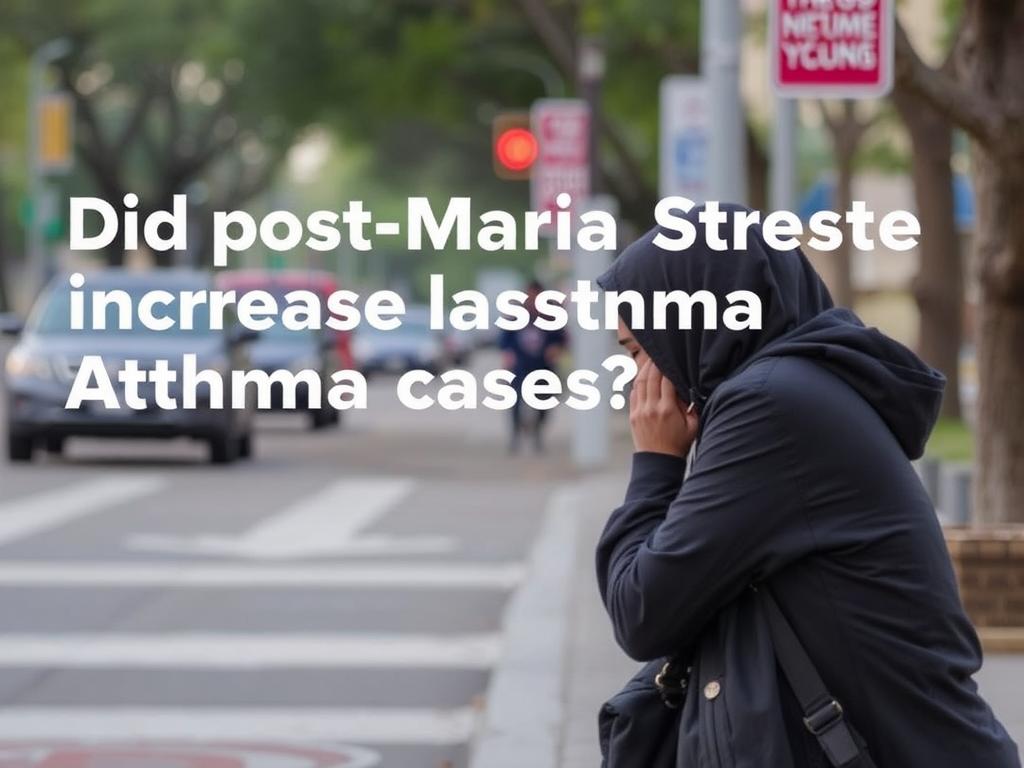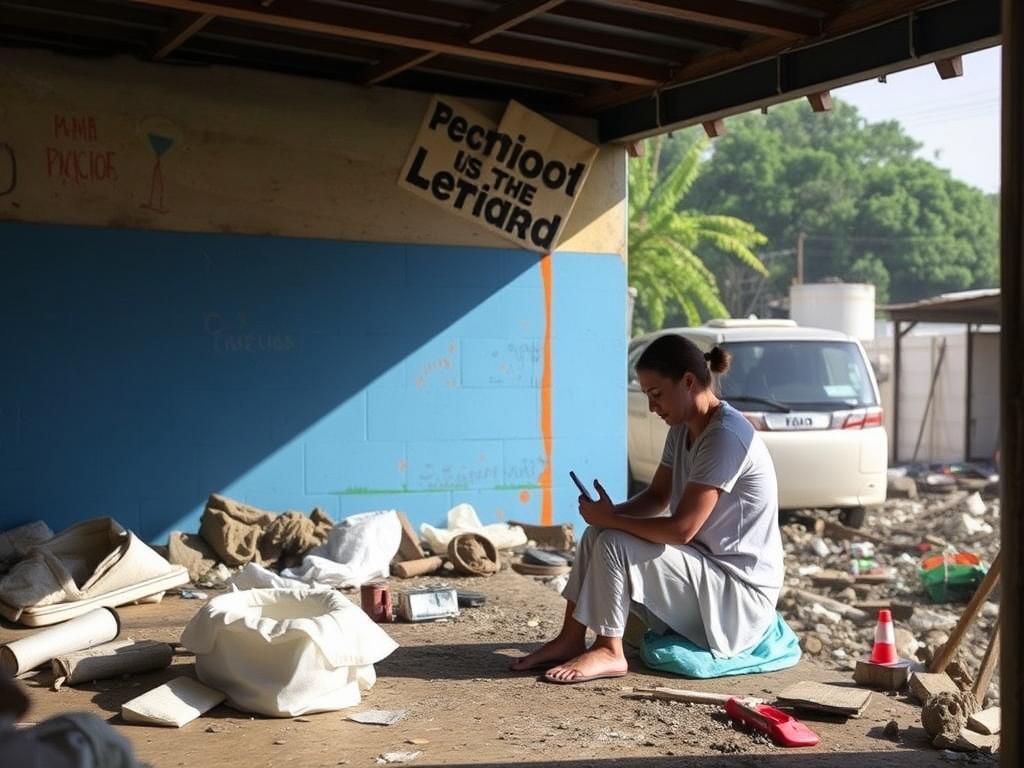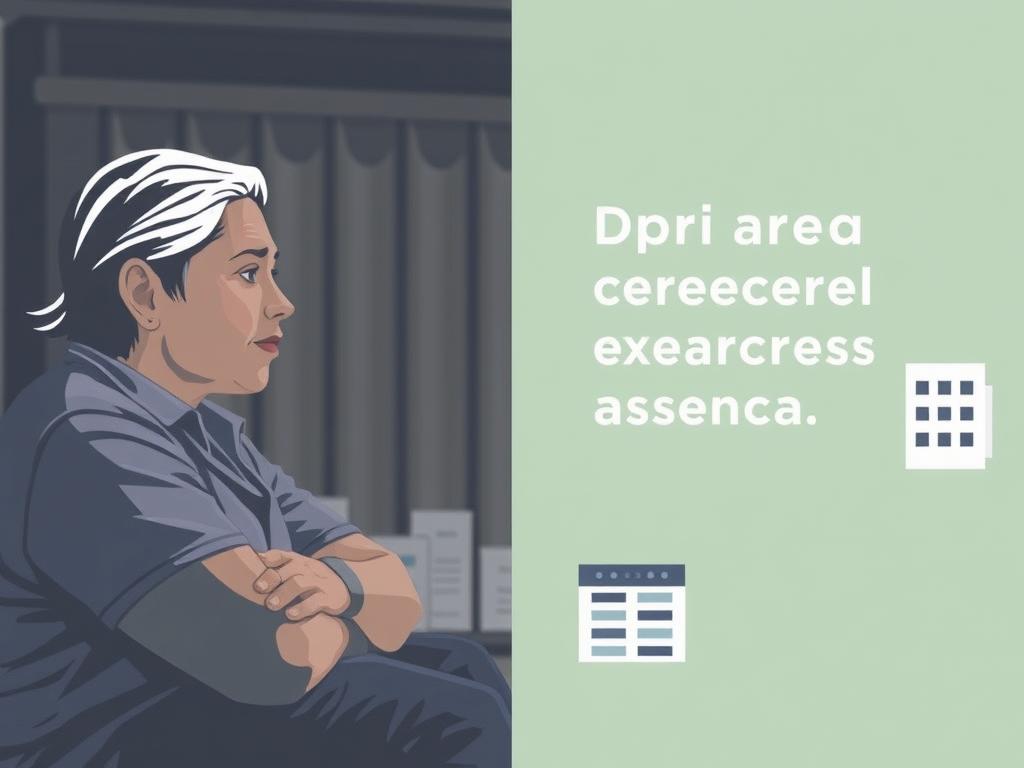Introduction: The Aftermath of Hurricane María and Its Effects on Health
Hurricane María, one of the most devastating storms to hit Puerto Rico, struck in September 2017, leaving behind a trail of destruction that dramatically changed life on the island. Beyond the visible damage to infrastructure and homes, Hurricane María’s impact reached far deeper, influencing both physical and mental health among the population. One curious and concerning pattern that emerged in the months following the hurricane was a notable increase in asthma cases. This led researchers, medical professionals, and the local community alike to ask a crucial question: did the stress caused by Hurricane María directly contribute to a rise in asthma cases? In other words, is there a connection between post-María stress and asthma?
When we talk about stress after a natural disaster, it’s not just a passing feeling of anxiety. It can be chronic, impacting daily life and well-being. The emotional strain of losing homes, loved ones, and access to basic needs creates a heavy psychological load, and this can affect the body in profound ways. In this article, we will dive deep into the evidence, explore the science behind stress and asthma, and understand how the hurricane’s aftermath created conditions that may have led to an uptick in respiratory illnesses.
Understanding Asthma: What It Is and How It Works
Before we examine the relationship between post-María stress and asthma cases, it’s important to understand what asthma really is. Asthma is a chronic respiratory condition characterized by inflammation and narrowing of the airways. This can cause symptoms such as wheezing, shortness of breath, chest tightness, and coughing. Asthma affects people of all ages, and its severity can range from mild to life-threatening.
Asthma triggers vary widely, including allergens like pollen and dust mites, irritants like smoke and pollution, and physical factors such as cold air and exercise. Stress is also a well-documented trigger, although how stress contributes to asthma is complex and not completely understood.
The Biological Mechanism of Asthma and Stress
Stress activates the body’s “fight or flight” response, releasing hormones like cortisol and adrenaline. While these hormones help us respond to danger, chronic stress can lead to an imbalance in the immune system. Inflammation can increase, and this heightened state can worsen asthma symptoms or trigger new cases in vulnerable individuals. The airways become more reactive, and control over symptoms becomes more difficult.
Post-María Stress: A New Kind of Toxic Burden
After Hurricane María, Puerto Rico experienced not only physical devastation but widespread psychological trauma. The loss of homes, prolonged power outages, scarcity of clean water, and limited access to healthcare were immediate sources of stress. In addition to this, the emotional toll of uncertainty about the future and grief over loss left many struggling with what experts call “post-disaster stress.”
Factors Contributing to Post-María Stress
- Displacement from homes and communities
- Extended power and water outages
- Limited access to medical care and resources
- Financial instability after the destruction
- Emotional trauma and grief from loss of life and possessions
- Environmental hazards like mold growth in water-damaged homes
This form of prolonged stress is different from everyday worries; it’s a sustained pressure that taxes the mind and body over months and even years. This chronic stress can trigger or worsen existing health conditions — asthma being one of the most vulnerable.
Linking Post-María Stress to Asthma Cases: What the Data Says

Several studies and reports from health officials and research institutions have shed light on the possible connection between post-María stress and the rise in asthma cases in Puerto Rico. Anecdotal evidence from doctors described a significant increase in asthma attacks and new diagnoses in the months following the hurricane.
A community health survey found that people who reported higher levels of psychological distress also had a higher incidence of asthma symptoms. According to the Puerto Rico Department of Health, asthma-related emergency room visits rose notably after the hurricane, especially among children.
| Time Period | Asthma Emergency Visits (per 1,000 residents) | Reported Psychological Distress (%) |
|---|---|---|
| Before María (2016) | 8.5 | 12% |
| Immediately After María (Late 2017) | 15.3 | 45% |
| One Year After María (2018) | 13.2 | 38% |
The table above highlights how emergency visits for asthma doubled right after the hurricane, while psychological distress quadrupled during the same period. This supports the hypothesis that extreme stress played a significant role in worsening asthma outcomes.
Environmental Factors Amplifying Asthma Post-María
Stress alone does not tell the whole story. The hurricane also created environmental conditions linked to asthma flare-ups. Floodwaters and humidity contributed to mold growth inside damaged buildings, a well-known asthma trigger. Dust, debris, and poor air quality from destroyed infrastructure further irritated respiratory systems. This cocktail of harmful environmental factors mixed with the body’s stress response created a perfect storm for asthma exacerbation.
The Challenge of Managing Asthma in Post-Disaster Contexts

Asthma management relies on regular medication, monitoring, and access to healthcare. However, the aftermath of Hurricane María disrupted these essential components. Many patients had limited access to inhalers and medications due to supply chain breakdowns. Frequent electricity and communication failures made it difficult for patients to connect with healthcare providers or emergency services when symptoms worsened.
This lack of stability increased anxiety and stress in those already vulnerable to asthma, cycling back into worsening health outcomes.
Community and Healthcare Response Efforts
Puerto Rican healthcare organizations, nonprofits, and international aid groups recognized the urgent need to address this growing health concern. Efforts included:
- Distribution of asthma medications and emergency inhalers
- Pop-up clinics delivering respiratory care
- Psychological counseling services to reduce stress burden
- Educational campaigns about mold prevention and respiratory health
- Improved monitoring and reporting of asthma-related health data
Despite these measures, ongoing challenges remain in providing consistent care in a setting still recovering from disaster.
The Broader Implications: Stress and Respiratory Illness Beyond Puerto Rico
The Puerto Rican experience teaches us a valuable lesson about the complex interaction between psychological stress and chronic diseases like asthma, especially in disaster-hit regions. Post-disaster stress is an often overlooked but critical factor that can amplify health problems.
Around the world, communities affected by hurricanes, wildfires, earthquakes, and other natural calamities have reported similar spikes in respiratory illnesses linked to stress and environmental factors. Recognizing this multifaceted connection can help shape better disaster preparedness and health response efforts that prioritize mental health alongside physical healthcare.
How Can We Address These Issues Proactively?
Disaster response plans should integrate mental health support immediately, understanding that reducing psychological stress is not only crucial for well-being but also for preventing physical health complications like asthma. Promoting community resilience, offering timely counseling, and ensuring healthcare continuity can reduce the long-term burden of disease.
Here’s a quick checklist for disaster planners and health officials:
| Focus Area | Recommended Actions |
|---|---|
| Mental Health | Deploy counselors; create safe spaces for stress relief |
| Environmental Health | Mold remediation; air quality monitoring; debris removal |
| Asthma Care | Ensure medication distribution; provide emergency inhalers |
| Community Outreach | Educational campaigns; support groups; health literacy programs |
| Data Collection | Track asthma cases; assess psychological distress levels |
Personal Stories: Voices from the Ground
To fully appreciate the human impact behind the statistics, listening to those affected by the post-María health crisis is essential. Many asthma sufferers describe how the storm created a frightening new reality.
Maria, a mother from San Juan, shared, “Before María, my son had asthma, but it was manageable. After the hurricane, with the constant stress and living in a moldy house, his attacks became more frequent and more severe. It felt like the storm never really left us.”
Health workers have echoed this sentiment, highlighting the challenges of caring for patients facing both physical and emotional scars from the disaster.
Moving Forward: Building Healthier Disaster-Resilient Communities

The relationship between post-María stress and asthma cases is a reminder of the delicate balance our health depends on and how external shocks can tip the scales. Puerto Rico’s journey continues as it rebuilds physical structures, strengthens healthcare systems, and nurtures community mental health. To prepare better for future disasters, integrating psychological support with environmental health and chronic disease management is key.
By understanding the hidden toll of stress on diseases like asthma, we can develop more compassionate, comprehensive healthcare and disaster recovery models — so no one is left vulnerable when the next storm hits.
Conclusion
In conclusion, the evidence strongly suggests that the surge in asthma cases after Hurricane María was not caused by environmental factors alone but was significantly influenced by the intense and prolonged stress experienced by the Puerto Rican population. Stress triggers biological changes that can worsen asthma symptoms or even lead to new cases, especially when combined with conditions like mold exposure and poor air quality. The hurricane exposed not only vulnerabilities in infrastructure but also in how health systems and communities manage mental health after disasters. Addressing post-disaster asthma increases means tackling both the emotional and physical aftermath simultaneously. Ultimately, Hurricane María’s legacy teaches us the importance of comprehensive healthcare strategies that consider the mind-body connection, especially in disaster recovery and preparation. Only by recognizing and treating stress as a serious health factor can future communities rise more resilient and healthier in the face of adversity.
